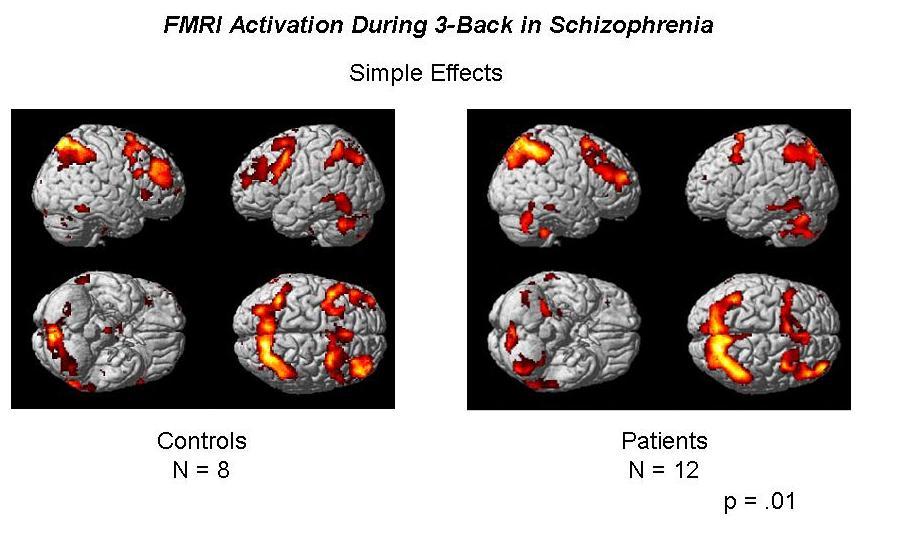Difference between revisions of "NA"
From NAMIC Wiki
m (Update from Wiki) |
m (Update from Wiki) |
||
| Line 1: | Line 1: | ||
| − | '''Objective:''' | + | '''Objective:''' This project assesses working memory using an auditory verbal version of the n-back task paradigm. Three conditions are presented in blocks in counterbalanced order with increasing working memory load demands (0-, 1-, 2- and 3-back). We will use NAMIC tools to perform novel analyses of the relationships between brain activation and morphological data (e.g., ROI volumes, DTI) in order to improve our understanding of structure-function relationships and connectivity in schizophrenia. |
| − | + | '''Progress:''' To date, 16 patients with schizophrenia and 13 healthy controls have been studied. Preliminary analyses on a subgroup have been completed (see image below). Data will be available in year three. | |
| − | |||
| − | + | [[Image:NAMIC_prelim_n2bk_results_good.jpg|[[Image:NAMIC_prelim_n2bk_results_good.jpg|Image:NAMIC_prelim_n2bk_results_good.jpg]]]] | |
| − | |||
| − | |||
| − | |||
| − | |||
'''Key Investigators:''' | '''Key Investigators:''' | ||
| − | * | + | * Dartmouth: Andrew Saykin, Robert Roth, Laura Flashman, John West, Thomas McAllister |
| + | * Harvard: Martha Shenton, Marek Kubicki | ||
| − | '''Links | + | '''Links''' |
| − | * [[ | + | * [[DBP:Marek_Kubicki_visit_Dartmouth_December_20_2005|December 20, 2005: Marek Kubicki visit to Dartmouth]] |
| − | + | * [[DBP:Andy_Saykin_visit_BWH_December_14_2005|December 14, 2005: Andy Saykin and Group visit to Brigham and Women's Hospital]] | |
| − | * [[ | ||
Revision as of 13:28, 18 December 2006
Home < NAObjective: This project assesses working memory using an auditory verbal version of the n-back task paradigm. Three conditions are presented in blocks in counterbalanced order with increasing working memory load demands (0-, 1-, 2- and 3-back). We will use NAMIC tools to perform novel analyses of the relationships between brain activation and morphological data (e.g., ROI volumes, DTI) in order to improve our understanding of structure-function relationships and connectivity in schizophrenia.
Progress: To date, 16 patients with schizophrenia and 13 healthy controls have been studied. Preliminary analyses on a subgroup have been completed (see image below). Data will be available in year three.
Key Investigators:
- Dartmouth: Andrew Saykin, Robert Roth, Laura Flashman, John West, Thomas McAllister
- Harvard: Martha Shenton, Marek Kubicki
Links
